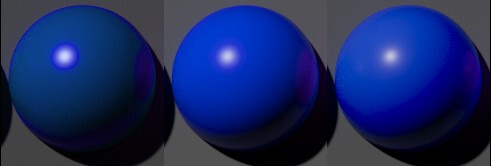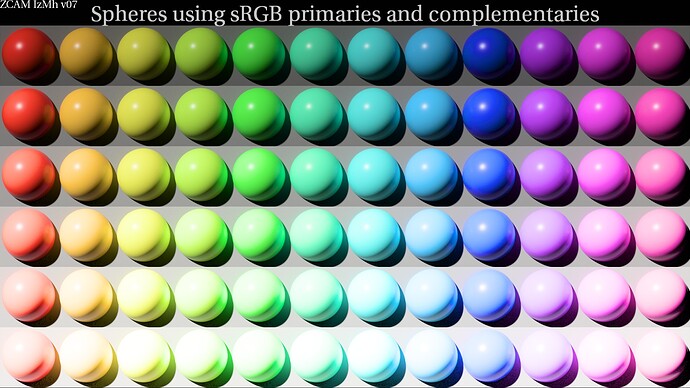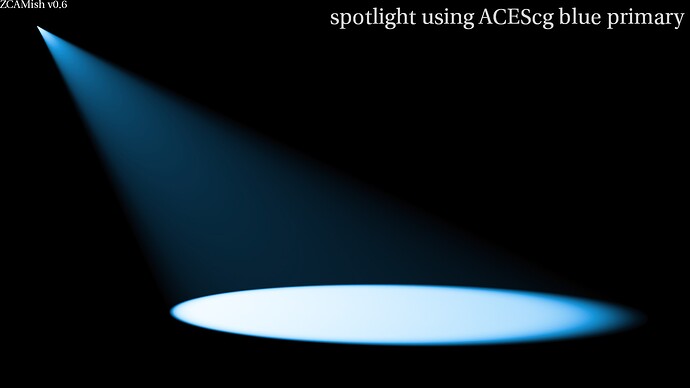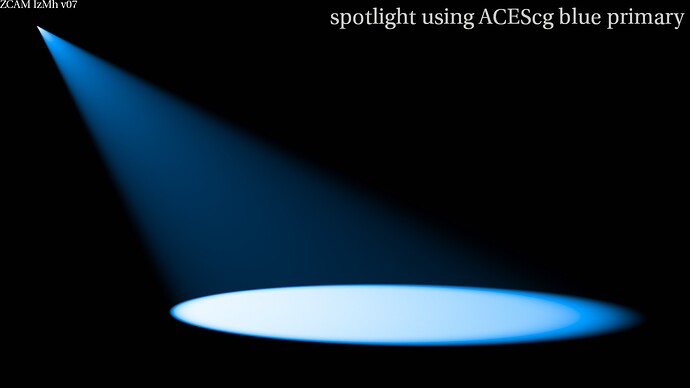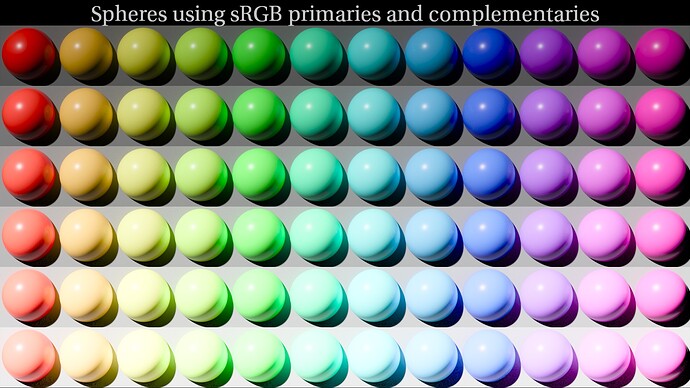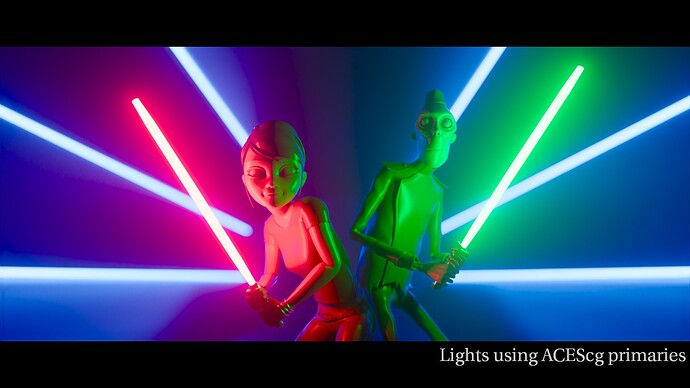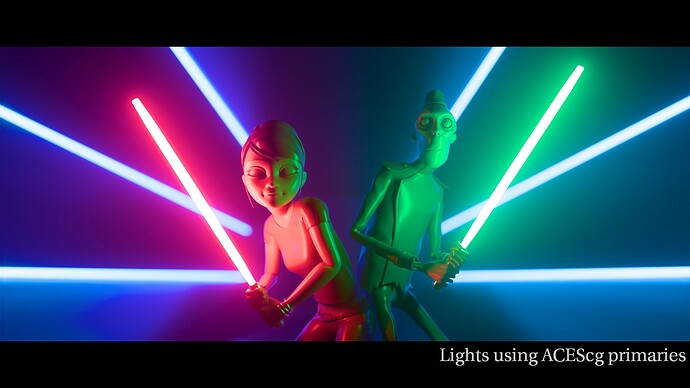Hello all,
I finally found some time to test “DRT_ZCAM_IzMh_v07_Blink” (sorry for the delay). I think it is an interesting prototype/candidate. It has less contrast than the current ACES Output Transform (I only compared the Rec.709 ODTs) and does not have the hue skews (at least on sRGB values) nor the clipping.
I found Mathias´ take on ZCAM DRT to bit a tiny bit more robust than ZCAMish DRT : it seems more “neutral” in terms of contrast, the ACEScg blue primary looks less green and the sRGB blue primary does not have the artifacts that I noticed previously. I tried to tweak a bit the parameters, but so far I found that the default settings worked pretty well.
Having checked all my CG examples, I would personally be interested to see this prototype chosen for ACES 2.0. It does a good job at maintaining both “chroma” and “luminance” at the same time (sorry for butchering the words).
Here are a few examples :
sRGB blue sphere artifact :
sRGB blue sphere “fix” :
ACEscg blue primary “looking” green :
ACEscg blue primary “looking” bluer :
Apart of double-checking all my CG examples, I also ran a couple of tests with some ramps. You may found this interesting (or completely useless) :
sRGB blue artifact :
sRGB blue “fix” :
Unfortunately it seems that the blue “artifact” is present in both implementations with an ACEScg blue primary :
I also did the ramp test with P3 primaries and I could not see the artifact. They did appear though with BT.2020 primaries.
If I had to use “DRT_ZCAM_IzMh_v07_Blink” on a full CG production tomorrow, I would probably set my working/rendering space to “linear_sRGB” or “linear_P3D65”. I think that this way I would avoid the hue skews that are most noticeable on ACEScg primaries and still maintain a “high level” of chroma (as hopefully the four images below show).
JzDT :
DRT_ZCAM_IzMh_v07_Blink :
JzDT :
DRT_ZCAM_IzMh_v07_Blink :
If I understood Alex´s explanations correctly, the hue skews noticeable on ACEScg primaries (especially blue and green) are part of the ZCAM model. So only some fitting would help on this matter ? Sorry if I got that wrong.
I also wonder if JzDT should be evaluated. It is a quite simple algorithm that yields pretty good results out-of-the-box. And sorry for repeating myself, but ACES 2.0 being a major release, I have a hard time seeing a “SSTS for both SDR/HDR with the sweeteners removed” as a potential candidate. It sounds more like an ACES 1.4 version to me.
My tuppence,
Chris

